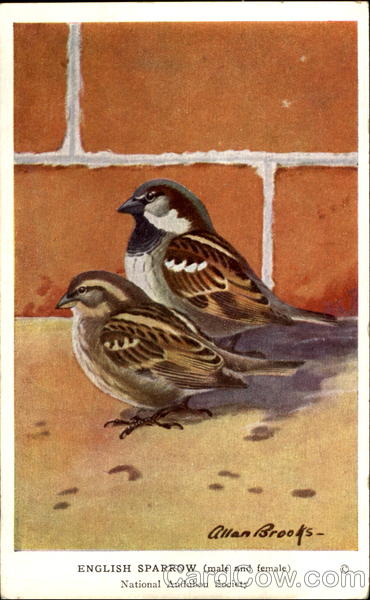Front:
Allan Broofs-
ENGLISH SPARROW (male and female)
National Audubon Society
Back:
puse
No. 39 English Sparrow
The enthusiasm with which this bird, the
sparrow of Europe and Asia, has been spre
over the world, despite many warnings abo... its
habits, is difficult to understand. From 1850 to
1870 it was introduced in many places in the
United States. Like the starling, it is a prolific,
aggressive bird. Its worst fault is that it usurps
for its nest holes, cavities and bird boxes t! at
would otherwise be available to more attractive
native birds. However, now they are here, we have
no choice but to accept them as an integral part
of our avian fauna.
Any bird that can increase from a few thou-
sand to millions, and spread over a continent in
just a few years, clearly enjoys a wide margin of
safety between its rate of reproduction and its
rate of mortality.
It is folly to think that bounties or any other
artificial controls can be more than temporarily
effective. The moment a local English sparrow or
starling population is reduced below a region's
carrying capacity for the species, it rapidly builds
up again. In recent years, the decline of the horse
has materially reduced the English sparrow carry-
ing capacity of both city and country areas.
Scientific name: Passer domesticus.
Length: 694 inches.
Range: Originally Europe and western Asia. Now the
temperate zones of every continent in the world.
No. 39 from set of 50 Birds of Western North America. Published
by the National Audubon Society, 1000 Fifth Avenue, New York 28,
New York. Price per set, $1.50 postpaid.



